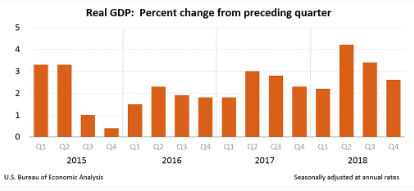Have You Heard of the “Mega Backdoor Roth IRA”?
Chances are if you are reading this, you’re already at least somewhat familiar with a Roth IRA. While the contribution limit will vary over time, in 2019 the limit is $6,000, plus an additional $1,000 catch up contribution for individuals over the age of 50. This limit is per individual, allowing married couples to contribute up to a maximum of $12,000-$14,000 depending on their age. Direct contributions to a Roth IRA also have an income phase-out limit that you’ll need to be aware of, which starts at $122,000 for single filers and $193,000 for joint filers.
What if I told you there was a way to contribute to a Roth IRA well beyond these limits, regardless of your income level? At some employers, you can.
The typical “backdoor Roth IRA” is a strategy for individuals to contribute to a Roth IRA that are over the income phase-out limitation for a direct contribution. This can be beneficial for many people, but still caps your contributions at only $6,000 or $7,000 per year. In some cases, your 401(k) may allow the ability to contribute on an “after-tax” basis, which opens up a world of possibilities for additional Roth contributions.
Roth contributions are contributed on an after-tax basis(meaning no current tax deduction), but earnings grow tax-free as long as you meet all the withdrawal eligibility rules set by the IRS. This means you must be at least age 59 ½ and meet the IRS’ “5 year rule” at the time of withdrawal.
An “after-tax” contribution works similar to a Roth contribution, but the taxation differs slightly. A pure after-tax contribution also provides no current tax deduction, but earnings associated with the money grow only tax-deferred and are later taxable at ordinary income rates upon distribution. As you can see, Roth dollars are generally more valuable than pure after-tax dollars.
The good news is, there is a fairly easy way to convert your pure after-tax dollars into Roth dollars so that all earnings grow tax-free. Once you hit the $19,000(plus $6,000 catch up for individuals over the age of 50) annual limit for your pre-tax and/or Roth contributions into your 401(k), you will want to begin contributing on an after-tax basis.
Pure after-tax contributions are not subject to the typical annual contribution limit of $19,000 or $25,000. Instead, they are capped at an overall 401(k) contribution limit of $56,000 or $62,000. This overall limit includes all of your pre-tax, Roth, employer matching, and after-tax contributions combined. In other words, if you make $100,000 per year and are under the age of 50, your pre-tax/Roth contributions are $19,000, your employer match is $6,000, and your maximum after-tax contributions are $31,000. ($56,000 – 19,000 – 6,000 match = $31,000 of remaining after-tax contribution ability). This additional $31,000 could then be rolled into a Roth IRA, allowing for the “mega backdoor Roth” contribution. This means you can potentially get up to $37,000 per year into a Roth IRA!
There is one caveat to this however. When you convert your after-tax contributions to a Roth IRA, any earnings that are associated with the after-tax contributions that enter the Roth IRA will be taxable. If you contributed $10,000 after-tax and that money has since grown to $12,000, you will pay tax on the $2,000 should you put the full $12,000 into the Roth IRA. This can be circumvented by removing only the pure after-tax contributions(basis) and leaving account earnings in the 401(k) account to grow tax-deferred and be withdrawn at a later date. For this reason, the sooner you can get the money from the after-tax 401(k) to the Roth IRA, the sooner your money will be growing for you tax-free. Once the money is in the Roth IRA, you are open to the entire world of investing beyond what is offered in the 401(k) plan. You have the ability to have the money invested in mutual funds, ETFs, stocks, bonds, and with the oversight of professional management should you choose.
This is a great savings strategy for individuals who are looking to increase the amount of their retirement savings and want to do so in a tax-advantaged way. For individuals who have the excess cash flow and budgetary means of doing so, the “mega backdoor Roth” is a no brainer. While this strategy can be complex, once initially set up the ongoing maintenance is minimal. Warren Street Wealth Advisors is here to assist and facilitate after-tax contributions, conversions to Roth accounts, and the underlying investment management. For individuals looking to take advantage of this huge tax savings opportunity, be sure to contact us for help getting this strategy implemented for your situation. Please bear in mind this strategy is only applicable to individuals who are already maximizing their current pre-tax or Roth contributions in the 401(k).
If you have any questions on the strategy or investments and tax planning in general, be sure to reach out and contact us as we are happy to help. As with nearly everything financial planning, specific rules and details will need to be implemented on a case by case basis, so be sure to contact us with the specifics of your case.

Justin D. Rucci, CFP®
Wealth Advisor
Warren Street Wealth Advisors
Justin D. Rucci, CFP® is an Investment Advisor Representative, Warren Street Wealth Advisors, a Registered Investment Advisor. Investing involves the risk of loss of principal. Justin D. Rucci, CFP® is not a CPA or accountant and the information contained herein is considered for general educational purposes. Please seek a qualified tax opinion or discuss with your financial advisor as nothing in this publication is considered personal actionable advice.
















